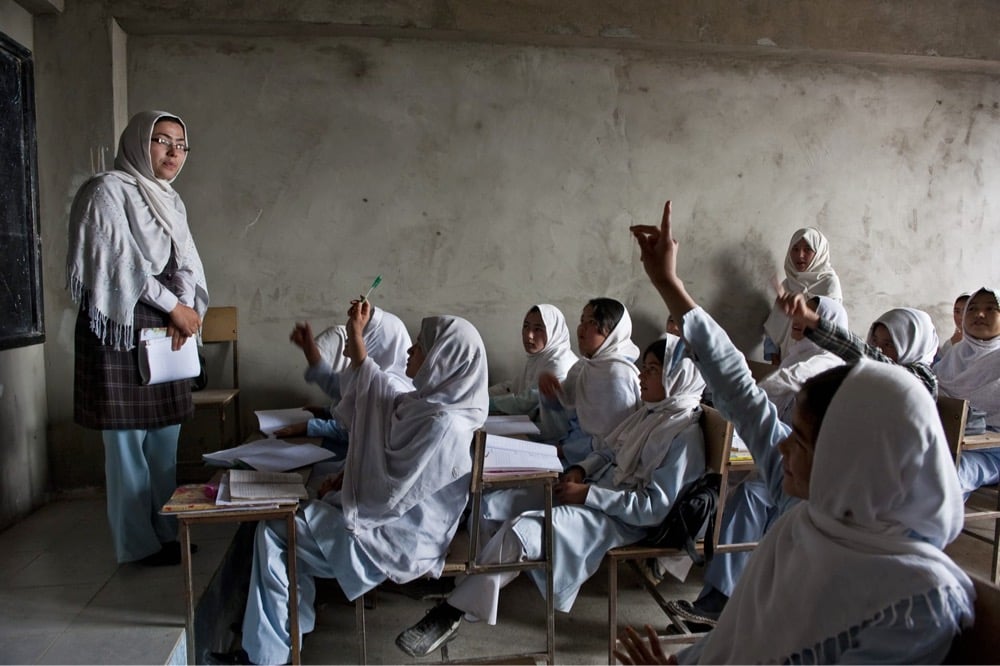The Taliban’s Return Is Catastrophic for Women in Afghanistan

Pulitzer prize-winning photojournalist Lynsey Addario has covered Afghanistan for the past 20 years. In the Atlantic, she writes about the effect of the return to power of the oppressive Islamic-fundamentalist Taliban will have on the country’s citizens, particularly women and girls. Here she describes life under the Taliban in 2000 and 2001:
Perhaps the silence of life under the Taliban sits with me more than anything. There were very few cars, no music, no television, no telephones, and no idle conversation on the sidewalks. The dusty streets were crowded with widows who had lost their husbands in the protracted war; banned from working, their only means of survival was to beg. People were scared, indoors and out. Those who were brave enough to venture out spoke in hushed voices, for fear of provoking a Taliban beating for anything as simple as not having a long-enough beard (for a man) or a long-enough burka (for a woman), or sometimes for nothing at all. Shiny brown cassette tape fluttered from the trees and wires and signs and poles everywhere-a warning to those who dared to play music in private. Matches in Kabul’s Ghazi Stadium had been replaced with public executions on Fridays after prayer. Taliban officials used bulldozers or tanks to topple walls onto men accused of being gay. People who stole had their hand sliced off; accused adulterers were stoned to death.
After the Taliban fell in 2001, Addario observed women returning to public life:
I photographed the defeat of the Taliban in Kandahar in late 2001, and returned to the country with my camera at least a dozen times in the subsequent two decades. From Kabul to Kandahar to Herat to Badakhshan, I photographed women attending schools, graduating from universities, training as surgeons, delivering babies, working as midwives, running for Parliament and serving in government, driving, training to be police officers, acting in films, working — as journalists, translators, television presenters, for international organizations. Many of them were dealing with the impossible balancing act of working outside the home while raising children; of being a wife, a mother, a sister, or a daughter in a place where women were cracking glass ceilings daily, and often at great peril.
Now those women, especially those involved in politics or activism, are in danger now that the Taliban have seized power in Afghanistan again.





Stay Connected